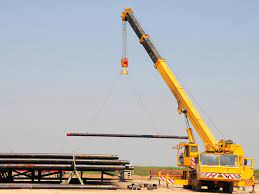After determining the most appropriate kind of crane for your specific requirements, the following step you should consider is the purchase of appropriate crane lifting accessories. In this kind of marketplace, you may choose from a large number of different brands. There are several factors to consider when selecting the appropriate lifting attachments for your crane, regardless of the manufacturer, and there may never be a one-size-fits-all answer. Regardless, while selecting the appropriate sort of crane lifting attachments, you should keep a few general guidelines in mind.
Capacity for Lifting
Depending on your specific situation and requirements, your lifting equipment must be capable of supporting a certain degree of weight capacity. Suppose your firm is mostly engaged in the construction of low-rise structures. In that case, the load capacity needed is substantially smaller than that of a company primarily involved in constructing high-rise buildings or airports. It would be the most straightforward regulation to follow since the majority of them available for purchase already have these specs specified on their packaging.
In the same way, this is an important regulation since unsustainable loads may entirely derail the building process and result in significant financial losses for the company, not to mention the danger of death or injury to those working on the job site.
Adaptability in the Lifting
Crane lifting attachments are designed to raise high weights. However, not all equipment will function well in all job site conditions. Crane lifting systems are available in various configurations that vary in terms of load capacity, form, and size. As a result, the most important factor to consider is how mobile a certain piece of equipment is, which would, in turn, decide the device's range.
Following the selection of a Jobsite, it is necessary to use the appropriate kind of crane and crane equipment. A rash decision on these aspects would result in a time-consuming building procedure that might have been avoided entirely if the proper equipment had been employed.
Lifting Capacity
Cranes are used to build a wide range of structures with diverse sizes and heights throughout the construction industry. As a result, cranes must be outfitted with the appropriate equipment or attachments that are capable of performing effectively in a specific construction environment, particularly in the absence of any eventualities.
Despite this, cranes should always be equipped with the appropriate equipment in order to reach great heights. Before investing in crane systems, construction businesses should thoroughly investigate the features of the systems in question. Otherwise, it would turn out to be a complete and utter waste of money.
Dimensions and a poundage
For building constructions such as bridges, a variety of raw materials and construction equipment are used. These materials must be mounted on these lifting attachments with confidence. The use of clumsy or inappropriate equipment on these raw materials might compromise the long-term endurance of the materials as well as the equipment itself.
Knowing the materials and attachments that a certain crane and its attachments utilise may also assist in ensuring that the appropriate cranes are sent to the appropriate places. Ultimately, it will be determined by each location's specific requirements and problems. Knowing the materials may make a significant difference in the smooth running of a building project.
In order to make the building process more efficient, new kinds of construction methods are continually being developed. In tandem with this, the construction sector is likewise developing at a rapid pace.
Furthermore, there has been a significant increase in the usage of heavy lifting equipment, such as crane lifting attachments, on building sites, which is a positive development. Therefore, there is a wide variety of alternatives accessible to organisations so that they may design their building process for optimum efficiency and the lowest possible losses to their specific needs and requirements.
That efficiency, on the other hand, does not come easily until the proper preparation is done in accordance with the guidelines mentioned above.





